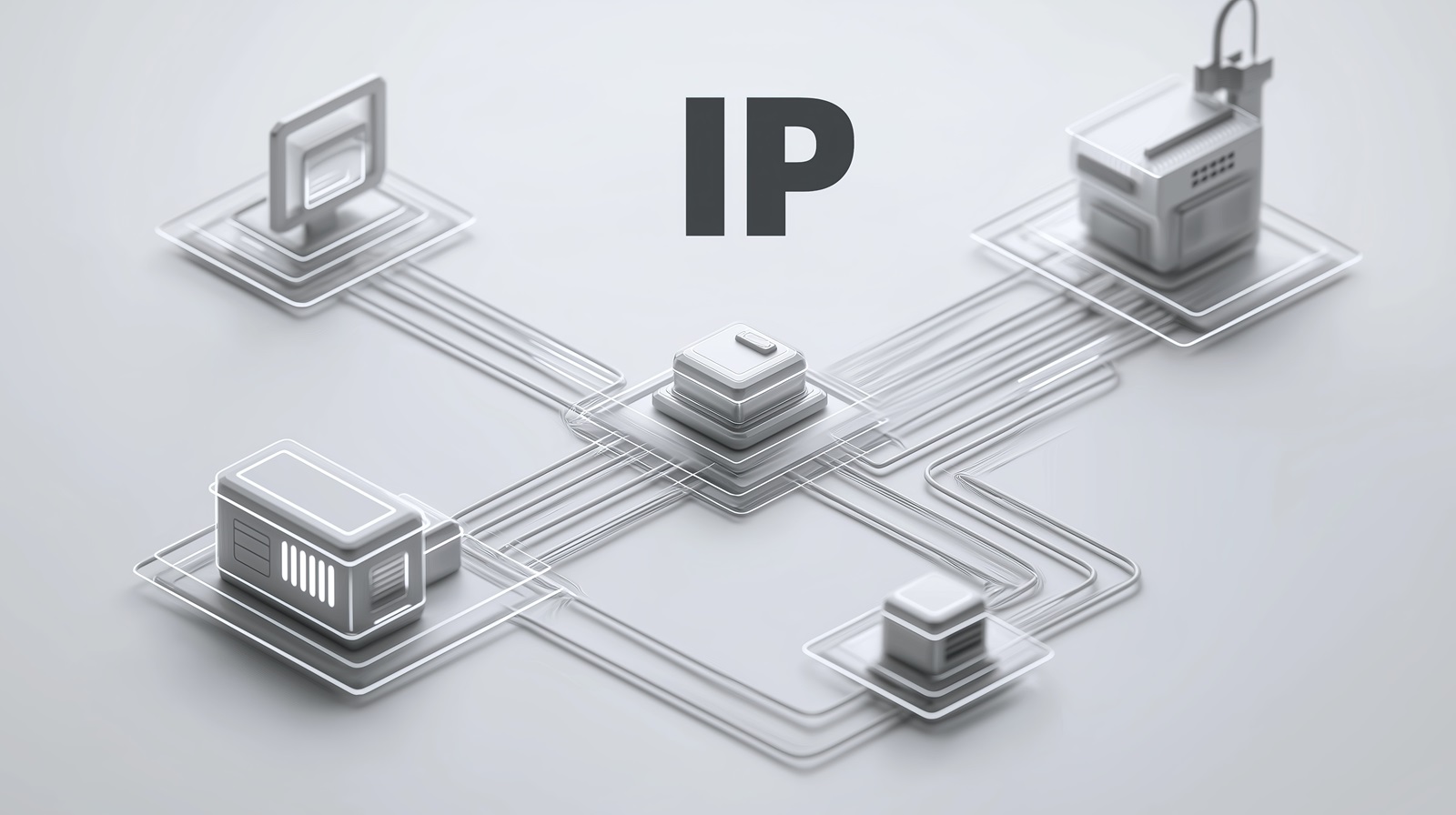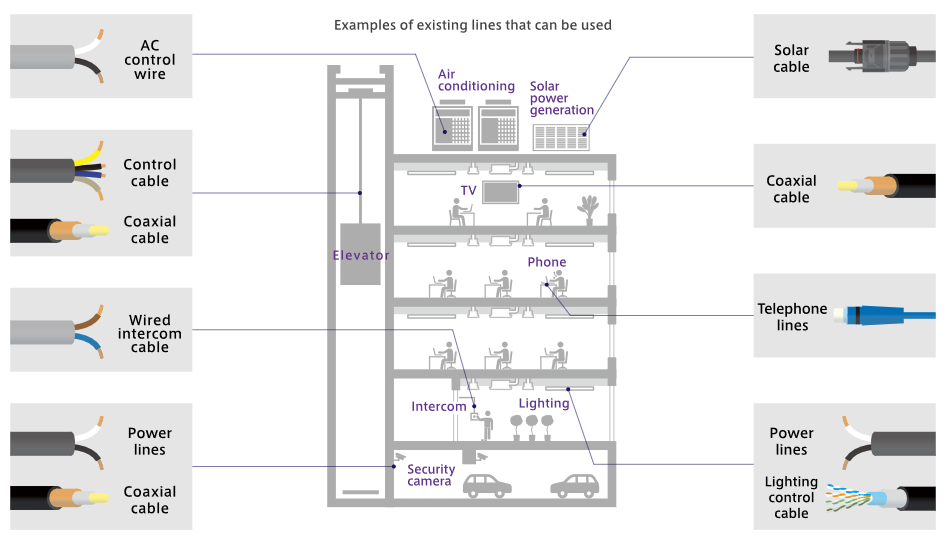10BASE-T1L and Nessum: Next-Generation Wired Communication Technologies for Industrial Networks

Table of Contents
- What Kind of Communication Infrastructure is Needed in the Smart Buildings Era?
- The New Wave of Long-Distance Ethernet―10BASE-T1L
- Flexibility and Reliability for Diverse Wiring Environments―Nessum
- 10BASE-T1L vs. Nessum―A Comparative Analysis for Communication Infrastructure Selection
- Summary―Selecting and Implementing the Optimal Technology for Your Environment
What Kind of Communication Infrastructure is Needed in the Smart Buildings Era?
As building automation continues to advance, there is a growing demand for creating comfortable spaces while ensuring stable and efficient operation of systems such as HVAC and lighting. Beyond energy savings during operation, attention is also shifting toward reducing costs and environmental impact across the entire building lifecycle—including CO2 emissions during construction and renovation.
Against this background, cost-effective solutions for communication infrastructure, which plays a critical role in device control, are becoming increasingly important. While legacy, non-IP communication protocols such as RS485 are still widely used in the field, the shift to IP-based networks is essential to accommodate higher communication speeds driven by growing data volumes and to support multi-vendor device environments.
Moreover, when upgrading communication lines, it is crucial not only to reduce CO2 emissions but also to address labor shortages and ease the burden of on-site work. This means enabling wiring work during construction or renovation to be completed within shorter timelines and at lower costs.
In this article, we focus on “10BASE-T1L” and “Nessum”, two next-generation wired communication technologies gaining attention, and explore how they contribute to industrial networks by leveraging existing communication infrastructure.
The New Wave of Long-Distance Ethernet―10BASE-T1L
What is 10BASE-T1L?
10BASE-T1L is a type of Single Pair Ethernet (SPE), a next-generation industrial Ethernet technology[1][2]. Defined under the IEEE 802.3cg standard, it enables data transmission over a single twisted pair cable for distances up to 1,000 meters—the longest range among all SPE specifications. Even at this extended distance, it supports a data rate of 10 Mbps, which is approximately 1,000 times faster than traditional serial communication protocols such as 9.6 kbps.
Additionally, 10BASE-T1L supports Power over Data Line (PoDL), allowing for a DC power supply of up to approximately 50W, depending on the transmission distance.
Supported Network Topology of 10BASE-T1L
10BASE-T1L only supports point-to-point communication, which enables the construction of Star and Tree topologies using Layer 2 switches.
Some vendors have also implemented Daisy-chain connections using dual-port devices[3][4]. These devices relay signals between two PHY ports, and in the case of a device failure along the path, the signal can be bypassed to maintain communication. However, there is a trade-off between the number of bypassable devices and the distance between them—the more bypassable devices in the chain, the shorter the allowable distance between each device.
No vendors have announced support for Bus (Multi-drop) topology with 10BASE-T1L(*). Within the SPE family, only 10BASE-T1S supports Bus (Multi-drop) configurations. Therefore, when considering the replacement of existing networks, it is essential to verify and evaluate the current wiring topology.
*As of August 2025, Research by Nessum Alliance
Reuse of Existing Cabling with 10BASE-T1L
To meet the communication performance requirements of SPE, cable structure and composition must comply with the IEC 61156 series, while connector shapes and interfaces must conform to the IEC 63171 series. Using cables that meet these standards satisfies the IEEE 802.3cg specifications for 10BASE-T1L and guarantees performance.
Some vendors have indicated that existing twisted pair cables may be reusable, although often with certain conditions[5]. As with topology considerations, preliminary validation and evaluation may be necessary to determine feasibility.
Flexibility and Reliability for Diverse Wiring Environments―Nessum
What is Nessum?
Nessum is a next-generation IP communication technology designed to operate across a wide range of environments, including wired, wireless, and even underwater or undersea applications[6]. Its technical specifications are defined under IEEE 1901. In its wired technology, Nessum WIRE, it supports data transmission over distances of several kilometers at speeds ranging from several Mbps to tens of Mbps, depending on the type of cable. Furthermore, Nessum adopts multi-hop technology that enables the connection of up to 1,024 devices, making it possible to build long-distance, large-scale networks.
Supported Network Topology of Nessum
Nessum is a topology-free technology, meaning it does not depend on the physical wiring layout. It supports all common industrial network configurations, including Star, Tree, Daisy-chain, and even Bus (Multi-drop) topologies. This flexibility enables seamless migration to Nessum-based networks without requiring changes to existing wiring structures.
For example, in building automation systems that currently use non-IP protocols, such as BACnet MS/TP (Bus or Daisy-chain topology) or LonWorks (free topology), Nessum enables IP migration without requiring changes to the physical wiring.

Reuse of Existing Cabling with Nessum
Nessum can utilize a wide variety of existing cables—such as twisted pair, coaxial, and power lines—regardless of cable type. While Nessum operates on a best-effort basis, and performance depends on the transmission environment, Nessum was originally developed as a technology for power line communication (PLC)—one of the most challenging wired environments. As a result, it incorporates robust noise-resilience features, including error correction, channel estimation, and multiple channels, ensuring highly reliable communication even under severe conditions.

10BASE-T1L vs. Nessum―A Comparative Analysis for Communication Infrastructure Selection
Both 10BASE-T1L and Nessum are technologies that contribute to the IP migration of industrial networks using single-pair (two-wire) cabling, each offering distinct characteristics and strengths. Understanding these differences is essential for selecting the right solution for your specific application.
10BASE-T1L
- Extended reach up to 1,000 meters compared to traditional Ethernet.
- Supports Star and Daisy-chain (when using dual-port devices) topologies.
- Guaranteed communication performance when using standard-compliant cables and connectors (with potential reuse of existing cables in some cases).
- Full-duplex communication for improved real-time performance.
Nessum
- Multi-hop technology enables long-distance communication (from several kilometers and beyond).
- Topology-free: supports Star, Daisy-chain, Bus (Multi-drop), and more.
- Capable of reusing a wide range of existing cables—twisted pair, coaxial, power lines—with best-effort performance.
- Enhanced robustness through noise-resilience technologies developed for power line communication.
| Nessum WIRE | 10BASE-T1L | |
|---|---|---|
| Standard | IEEE 1901 | IEEE 802.3cg |
| Communication Speed |
Several to tens of Mbps(*) (Best effort) |
10 Mbps (Guaranteed) |
| Communication Distance |
Several km(*) (Max. x10 extension with multi-hop) |
1,000 m |
| Connection | Point-to-Multipoint (Free Topology / 1,024 nodes) |
Point-to-Point (Star / Daisy chain with dual port devices) |
| Cable | Any type of cable (No new wiring) |
SPE cable (Existing cables may be reusable) |
| Transmission | Half Duplex | Full Duplex |
Key Facts to Remember―Selecting and Implementing the Optimal Technology for Your Environment
Both 10BASE-T1L and Nessum are powerful communication technologies driving the IP migration of industrial networks.
10BASE-T1L is ideal when Ethernet-based long-distance communication, guaranteed performance through standards compliance, and real-time capability are priorities. On the other hand, Nessum stands out for its topology-free flexibility, ability to reuse various existing cable types, and robust noise resilience developed through its origins in power line communication—making it particularly effective in maximizing existing infrastructure.
As these technologies continue to gain traction, organizations will have greater opportunities to select the most suitable communication infrastructure for diverse field environments. The key to successful implementation lies in aligning site-specific challenges with the unique strengths of each technology, ensuring the first step toward building truly smart infrastructure.
Let’s explore how Nessum can offer benefits to your business.
Reference
[1] Cost-Effective IP Network Solution – "Single Pair Ethernet" and "Nessum" | Nessum Alliance
[2] Technology | SPE Industrial Partner Network
[3] T1L-Ethernet-Technical Resource Guide | Honeywell
[4] ADIN2111 Datasheet and Product Info | Analog Devices
[6] Introduction To Nessum - What Is "Nessum"? | Nessum Alliance




